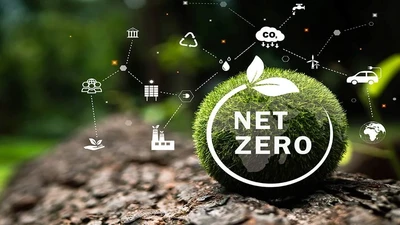
Climate change is one of the most pressing challenges of our time, posing significant threats to ecosystems, economies, and human health. As the planet continues to warm due to greenhouse gas emissions, the urgency for nations to take decisive action has never been greater. Achieving carbon neutrality by 2050 is a goal that has been embraced by many countries, businesses, and organizations worldwide. This ambitious objective demands a comprehensive understanding of how nations can effectively transition towards net-zero emissions.
Carbon neutrality refers to achieving a balance between emitting carbon dioxide and absorbing carbon from the atmosphere. This can be accomplished by reducing emissions, enhancing carbon sinks, and investing in carbon offset programs. The ultimate goal is to equate greenhouse gas emissions produced with those removed from the atmosphere, effectively resulting in no net increase in atmospheric carbon levels.
Net zero emissions imply that a country, business, or organization has reduced its carbon emissions to the extent that any remaining emissions are offset through natural processes, technological solutions, or carbon credit transactions. This often involves both immediate reductions in emissions and investments in projects that capture or reduce carbon elsewhere.
The Intergovernmental Panel on Climate Change (IPCC) has emphasized that limiting global warming to 1.5 degrees Celsius above pre-industrial levels is crucial to avoiding the most severe impacts of climate change. Achieving net zero emissions by 2050 is a critical milestone in this effort, aligning with international agreements such as the Paris Agreement. By committing to carbon neutrality, nations can:

One of the most significant contributors to global carbon emissions is the combustion of fossil fuels for energy. Transitioning to renewable energy sources is essential for achieving carbon neutrality.
Improving energy efficiency across various sectors is a key strategy for reducing emissions.
Agriculture is a significant source of greenhouse gas emissions, particularly methane and nitrous oxide. Sustainable agricultural practices can mitigate these emissions while enhancing food security.
CCS technology is crucial for capturing emissions from industrial processes and storing them underground to prevent their release into the atmosphere.
Restoring and enhancing natural carbon sinks is vital for achieving net zero emissions.
Carbon pricing mechanisms, such as carbon taxes or cap-and-trade systems, create economic incentives for reducing emissions.
Creating resilient communities that prioritize sustainability is essential for achieving carbon neutrality.
While the strategies outlined above provide pathways to carbon neutrality, several challenges must be addressed:
Achieving carbon neutrality requires strong political commitment at all levels of government. Policymakers must prioritize climate action and engage various stakeholders to drive meaningful change.
Transitioning to a low-carbon economy may involve upfront costs that can be a barrier for some nations, particularly developing countries. Financial support, technology transfer, and capacity-building initiatives are critical to overcoming these challenges.
Advancements in technology will play a vital role in achieving net-zero emissions. Continued investment in research and development is essential to overcoming barriers and enabling a quicker transition.
Equitable climate action must be a priority to ensure that marginalized communities are not disproportionately burdened by the transition. Addressing social and economic inequalities is essential for fostering inclusive climate solutions.
Climate change is a global challenge that necessitates international cooperation. Countries must work collaboratively to share best practices, technologies, and resources to achieve collective goals.

Sweden has emerged as a leader in climate action, committing to achieving net-zero emissions by 2045. The country has prioritized renewable energy, carbon taxation, and investment in sustainable transport solutions. Innovative policies have allowed Sweden to reduce greenhouse gas emissions significantly while maintaining economic growth.
New Zealand has set an ambitious target of achieving net-zero emissions by 2050. The nation is focused on reducing emissions through renewable energy generation, sustainable agriculture, and reforestation programs. With strong public support for climate initiatives, New Zealand is paving the way for achieving its goals.
Costa Rica is renowned for its commitment to sustainability and biodiversity. The country has implemented innovative policies that prioritize renewable energy, reforestation, and conservation. Costa Rica generates a significant portion of its electricity from renewable sources, aiming for carbon neutrality by 2050.
Finland has established a carbon neutrality target for 2035, one of the most ambitious in the world. Key strategies include shifting to renewable energy, promoting energy efficiency, and enhancing carbon sinks through forestry practices. Finland’s comprehensive approach exemplifies a commitment to sustainable development.
Achieving carbon neutrality by 2050 is a critical endeavor for nations worldwide, requiring collaborative efforts and a multi-faceted approach to policies, technologies, and community engagement. While the challenges are significant, the strategies outlined in this post offer viable pathways to mitigating climate change and adapting to its impacts.
As nations work toward net-zero emissions, it is essential to prioritize equity, sustainability, and resilience in all climate initiatives. By fostering a global culture of collaboration and innovation, we can create a more sustainable future for generations to come.